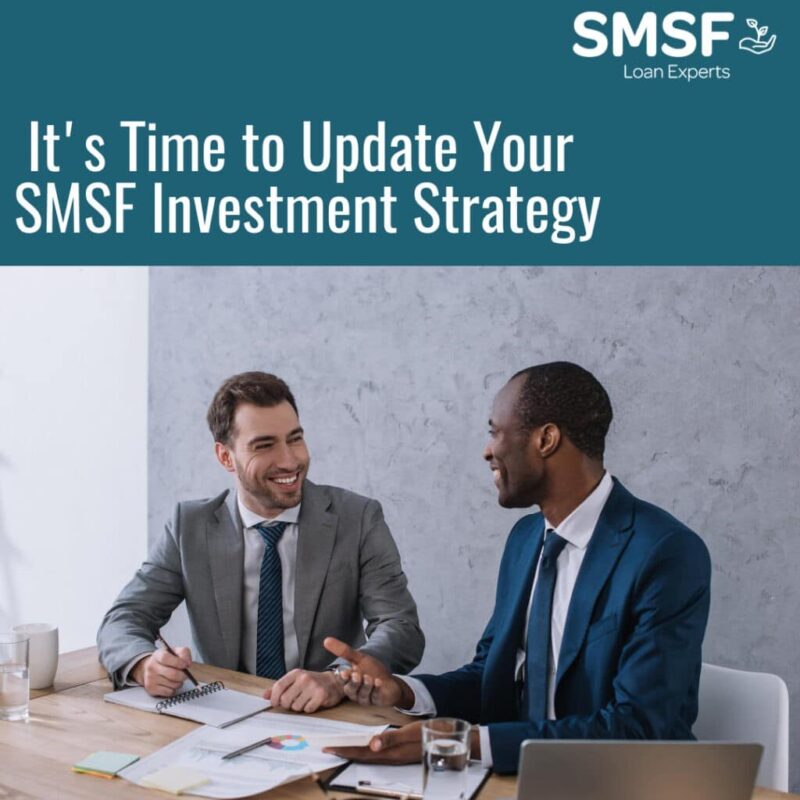With the market turbulence of COVID-19 finally stabilising, have you looked to update your self-managed super fund (SMSF) investment strategy? Not only is an appropriate strategy compulsory for SMSFs, but a dynamic and relevant investment strategy can be the driving force to ensuring your retirement savings can weather any future storms on the market horizon.
We guide you through the importance of updating your investment plan and refresh your memory on what you should be considering in the wake of COVID-19.
When should an investment strategy be updated?
If you take the Australian Tax Office’s advice, your SMSF strategy must be reviewed at least annually; the end of the financial year is typically an opportune time to do so. However, significant events, such as those that occur in your own personal and financial world or within the SMSF itself (a member wishing to commence an income stream or a tenant leaving an investment property), also present opportunities to consider a review of the fund’s investment strategy. With that in mind, external factors, too, like economic recessions and market corrections, such as we’ve seen in recent times, are considered significant events and should prompt prudent SMSF trustees to undertake a review of their fund’s investment plan.
Given that the strategy is a written document tailored to each fund’s individual and specific circumstances, it’s imperative that an SMSF’s investment strategy is taken seriously and not just treated as a ‘tick and flick’ exercise to satisfy your SMSF auditors. After all, the strategy not only lays the path for your SMSF’s investment choices, but also drives the fund throughout its investment journey well into the retirement of its members and beyond.
What should I consider when updating my Investment Strategy?
Like a game plan in a sporting match, your SMSF strategy needs to take into account all the relevant factors of your SMSF and be formulated to ideally orchestrate the ongoing success of the fund’s investments in line with the goals and objectives of the members. Just like a game plan would be modified for the absence of a key player, weather conditions or a different playing surface, so too should your investment strategy.
Some of the circumstances that should be factored in are:
- The ages of members
The age of a member is important for the investment time frame, retirement goals and longevity risk. - Employment of members
Consider what income is expected into the fund and how the income is going to be invested. - The level of debt within the SMSF
The risk appetite of each individual member and the overall fund’s determined risk profile.
These are all important circumstances to consider as they directly correlate to the key factors that make up an investment strategy.
Key factors to include in SMSF Investment Strategy review
Simply allocating 0 – 100% in each asset class and signing on the dotted line isn’t sufficient in building a robust and meaningful strategy for your SMSF.
The key factors that you should take into account include:
- – The ability of the SMSF to discharge its existing and prospective liabilities. Is your SMSF fund able to pay benefits when members retire and cover all operation costs?
- – What are the insurance needs of the fund’s members?
- – How is the fund to be distributed upon the passing of a member – are their death benefit nominations outlined in the existing document, and do they remain appropriate?
- – What is the composition of the fund’s asset allocation? Does the fund hold sufficient diversification to withstand another market trough without compromising returns?
- – How liquid are your fund’s assets? This will be important if you hold debt and if members are approaching retirement.
- – What are the likely returns of your investment mix, and are they fit to serve the fund’s objective and expected cash flow requirements?
- – Is the expected risk and return of the fund balanced according to the members’ requirements?
Can I use a standard template for an SMSF Investment Strategy?
While standard templates are a great place to start, it is easy to fall into the trap of relying too heavily on standardised wording and consequently failing to tailor the strategy to the unique needs of your particular fund. Given that the investment plan is required for your fund’s annual audit, it would be undeniably foolish to rely solely on a standard template.
Am I penalised if my SMSF strategy is not up to date?
Your SMSF fund auditor will be looking to determine whether your fund has delivered on the investment strategy. The penalty for an inadequate strategy can be up to $4,200 if your auditor lodges a contravention report. The penalty is per individual trustee or corporate trustee, so it’s absolutely crucial that your strategy receives the attention it deserves.
Recent ATO scrutiny over the diversification requirement of SMSF investment strategies has highlighted the need to have your investment plan personalised to your fund. In particular, the ATO has warned trustees where the SMSF has purchased property through a limited recourse borrowing arrangement of the potential for concentration risk within an SMSF. This means it’s even more important to make sure that your investment objectives are developed to mitigate risks such as concentration risk.
Is an investment strategy really that important?
Apart from it being a legal requirement, it is essential to have a thoroughly considered investment strategy.
SMSF’s provide a lot more flexibility regarding asset classes and investment choices, but that doesn’t mean you should invest solely in one asset class just because you can. It’s imperative to choose your investments having regard to your objectives and financial needs. Simply finding an asset class that meets your required return isn’t good enough; you need to ensure your investment objectives can be met while effectively managing risk and cash flow requirements.
When your strategy is tailored specifically for your personal circumstance, it’s like using a GPS that shows your destination and the road you need to take to get you there.
Who can help update my strategy?
Not only can we ensure you have the most appropriate lending structure for your SMSF, but we can also assist in ensuring a supportive and robust strategy lays the foundation for property investment success for your fund. Contact us today to find out how.








